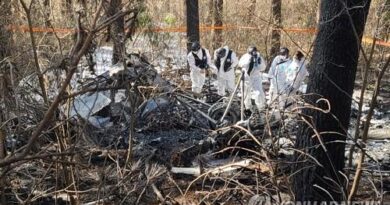Government to improve resident evacuation system to prepare for ultra-fast wildfires

□ The government announced that it will improve the resident evacuation system in preparation for the ultra-fast forest fires that recently occurred in Gyeongbuk.
○ This forest fire spread very quickly, with the gusts of wind so strong that it could be called a disaster climate, and the spread of the fire reached 2km. As a result, 31 people died while evacuating from the forest fire.
– The weather conditions at the time were optimal for the spread of forest fires. The national average temperature was 14.2℃, the highest ever, and the rainfall was the lowest ever, making it extremely dry. The maximum instantaneous wind speed in the Andong area was 27.6 m/s.
– Due to the worsening weather conditions, it was difficult to obtain accurate fire line information, making it impossible to determine the evacuation time in accordance with the speed of forest fire spread.
– The limitations of the existing resident evacuation system were revealed, such as the evacuation plan that did not take into account the walking speed of the elderly (about 72% of the general public) and situations requiring evacuation beyond the city or county, and the delay in transmitting the situation due to power and communication outages.
○ Accordingly, the Ministry of Public Safety and Security, together with relevant organizations * , analyzed the characteristics of this wildfire and prepared a plan to improve the resident evacuation system to enable early evacuation.
* Korea Meteorological Administration, Korea Forest Service, National Institute of Forest Science, National Disaster and Safety Research Institute
□ First, we will improve the forest fire spread prediction system (Korea Forest Service) to predict the scope of forest fire spread by considering not only the average wind speed but also the maximum instantaneous wind speed.
○ In the future, we will create a forest fire spread prediction map by applying the maximum instantaneous wind speed, and based on this, we will prepare a resident evacuation guideline * .
* Danger zone (within 5 hours of fire line): Evacuate immediately / Potential danger zone (within 8 hours of fire line): Prepare to evacuate
○ In cases where it is not possible to utilize fire line observation equipment such as helicopters and drones due to worsening weather , the risk zone will be set as conservatively as possible by applying this forest fire case .
* The maximum instantaneous wind speed is 27.6 m/s (diffusion speed is approximately 8.2 km per hour), and the wind direction is set at a wider angle based on the main wind direction.
○ The Korea Forest Service plans to actively guide and support local governments to prepare for forest fires by utilizing forest fire spread prediction maps.
□ Each local government establishes an evacuation plan for residents in preparation for ultra-fast forest fires.
○ If the maximum instantaneous wind speed in the area is 20 m/s or higher, a plan for evacuation is established from the existing village unit to the town/township/dong, city/county/district unit, taking into account the regional situation.
○ Refer to the forest fire spread prediction system to evacuate vulnerable facilities such as nursing homes and facilities for the disabled in advance, and if there is a risk of forest fire spread during the night, complete evacuation before sunset.
□ Based on the risk zone of the forest fire spread prediction system, a ‘3-stage forest fire disaster resident evacuation * ‘ evacuation system was also established.
* ➀ Ready: A stage where a forest fire has occurred in a nearby city or province, and caution is required when moving
. ➁ Set: A stage where advance preparation is required as an evacuation order may be issued depending on the spread of the forest fire.
➂ Go: A stage where immediate evacuation is required.
○ The Ministry of the Interior and Safety plans to distribute the resident evacuation guidelines for ultra-fast wildfires along with the national action plan (April 17) and provide education to local governments nationwide.
□ Lee Han-kyung, head of the Disaster and Safety Management Headquarters, said, “In the case of a super-fast forest fire like the recent Gyeongbuk forest fire, rapid evacuation should be the top priority.”
○ “Citizens are requested to be familiar with the national evacuation guidelines and, when an evacuation order is issued, to evacuate quickly for safety even if it is somewhat inconvenient.”
Subscribe to our newsletter!







